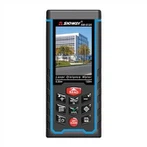What does the multimeter diode buzzer do?
The function of the diode buzzer of the multimeter is to detect whether the circuit is open or not, and to detect the diode Hall resistance.
First, detect whether the line from the controller to the terminal is connected. For example, detect the circuit of the handlebar: unlock, turn on the power of the whole car, the car will not move when the power is turned on, and the handlebar will not work. The red test lead is connected to the controller transfer wire, and the other end is connected to the transfer handle terminal to detect whether the red, black, and blue are connected. If the buzzer is not beeping, the wire is broken.
Second, check the handle and whether the motor hall is damaged. The red test lead is connected to the negative signal line of the handle, and the black test lead is connected to the green signal of the handle. If there are 500 to 600, it means that the handle is normal. The Hall of the motor is red and connected to the negative signal line, and the black test lead is connected to the green line, yellow line, and blue line in turn. There are 500 to 600 stable values indicating that the Hall is normal. (The value of 500-600 indicates a positive voltage change of 0.5-0.6)
Third, detect whether the phase wire of the controller is good or bad. The red is connected to the total negative wire of the controller, and the black is connected to the three phase wires of yellow, blue and green at one time. If the measured values are the same, it means that the phase wires are normal.
Fourth, detect whether the LED bulb is good or bad. The black pen is connected to the negative pole, the red pen is connected to the positive pole, and the light is normal.
How the multimeter marks the recording time:
The time at which the minimum and maximum values were detected is very useful information for determining the cause of intermittent failures. A digital multimeter in Min/Max/Average recording mode can store the amount of time between when a recording is started and when a new minimum, maximum, or average value is saved. Therefore, each saved minimum, maximum and average value has a "time stamp" corresponding to it.
Now, digital multimeters with digital acquisition or storage functions also have the same strip recording function through computers or their own memory. If the DMM has a Min/Max/Average recording mode, like a tape recorder, the DMM also takes readings at regular intervals. But instead of saving a reading with a tape recorder, the reading is compared to the previously saved reading to determine if the value is higher than the previous maximum value or lower than the previous minimum value j If so, the new reading will be replaced The value originally held in the high or low reading register. After recording for a period of time, you can recall the values of these registers for display, and view the maximum and minimum values during the recording time.






